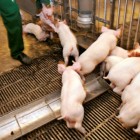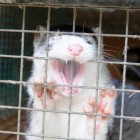Agribusiness
Nye 2015-tal: Svin og mink er de helt dominerende MRSA-smittekilder
|
Mens 68 pct. procent af de konventionelle svinebedrifter har MRSA CC398, er der kun konstateret smittebærende svin hos seks procent af de økologiske svinebedrifter. Det viser Fødevarestyrelsens screening fra efteråret 2015. I minkindustrien er derimod hver femte virksomhed (23 pct.) inficeret med MRSA CC398, og som noget nyt blev der også fundet MRSA CC398 hos 10 pct. af de undersøgte besætninger med slagtekvæg.


